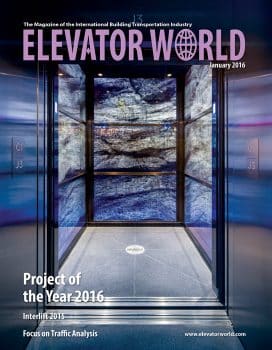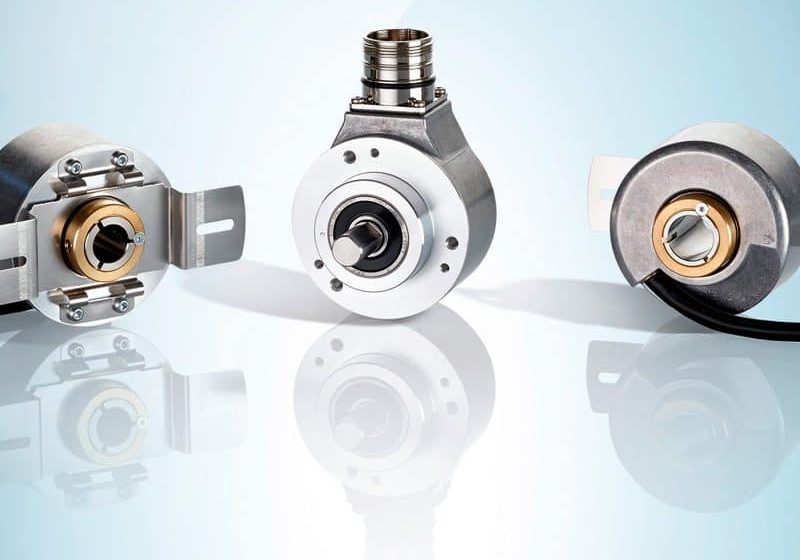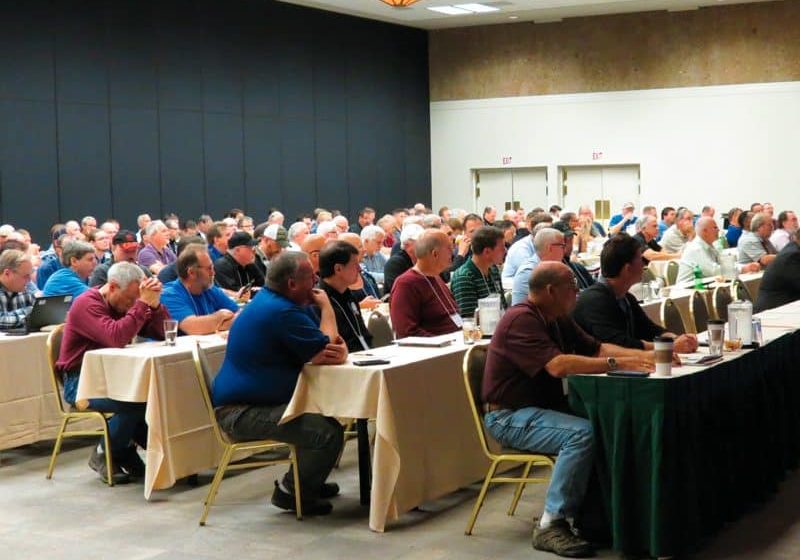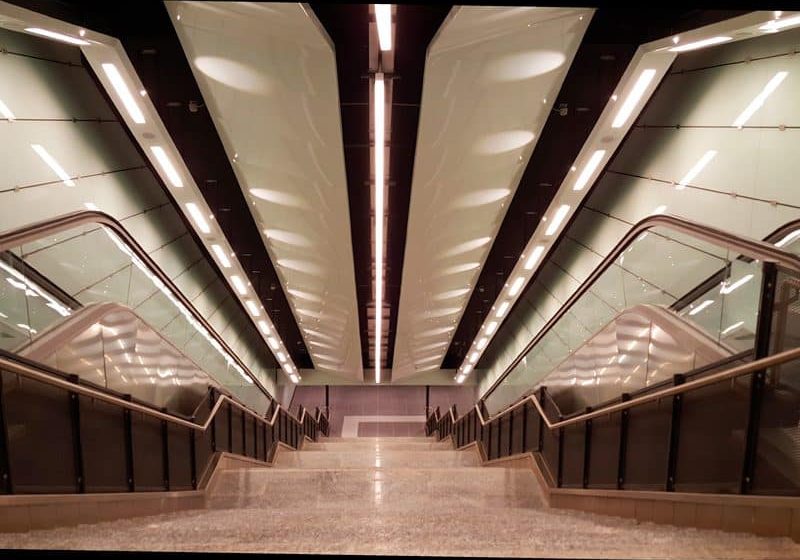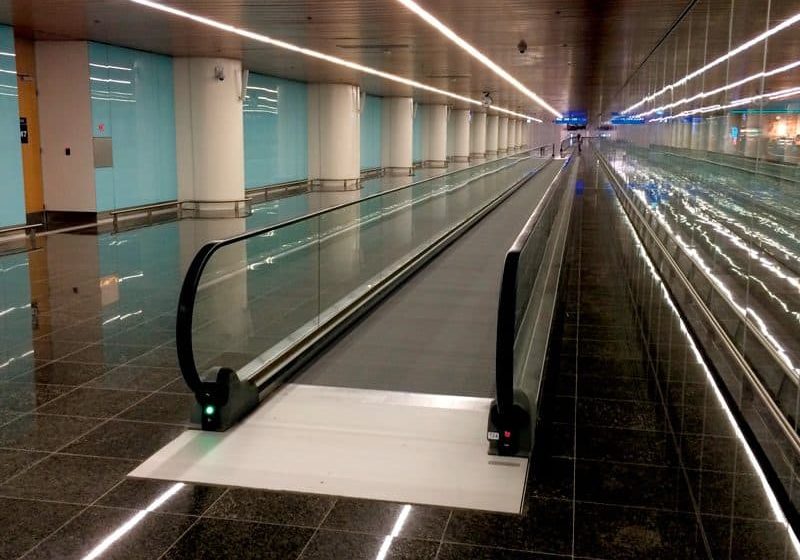Alexander Miles
Jan 1, 2016

While this 19th-century inventor had a unique contribution to elevator history, the story has been corrupted over the decades.
In October 2015, ELEVATOR WORLD received an email suggesting that the magazine acknowledge Alexander Miles’ contributions to the elevator industry. The topic came about from a posting on the Grio, dated October 11, 2015, which proclaimed, “On this day in 1887: Alexander Miles patents electric elevator.” An Internet search revealed several other sites that repeated this claim. Additional sites that also referenced Miles were found; however, these identified him as the inventor of the automatic elevator door. The primary basis for these claims was Miles’ single elevator-related patent: “Elevator,” U.S. Patent No. 371,207 (October 11, 1887). However, further investigation confirmed that Miles did not, in fact, patent an electric elevator or invent the first automatic door. This sequence of events prompted several important questions:
- Who was Alexander Miles?
- What was the true nature of his contributions?
- Why were the claims reported above attributed to him?
The answers to these questions revealed an intriguing 19th-century inventor, as well as efforts to expand our understanding of the diverse set of individuals who contributed to the development of the modern elevator.
Miles (1837-1918) spent the majority of his professional career as a barber. He was born in Ohio and apparently began his career as a barber in Waukesha, Wisconsin, in the late 1850s. He moved to Winona, Minnesota, in the early 1860s, where he continued his career as a barber and met his future wife. In the late 1860s or early 1870s, Miles moved to Toledo, Ohio, where he worked as a barber and where he pursued his first patent: “Improvement in Compounds for Cleansing the Hair,” U.S. Patent No. 121,536 (December 5, 1871). In 1875, Miles moved back to Minnesota; however, he did not return to Winona but, instead, chose the city of Duluth, where he and family lived for the next 25 years. By the early 1880s, he owned and operated one of the leading barbershops in the city. During this period, he also pursued his second patent: “Hair Tonic,” U.S. Patent No. 289,922 (December 11, 1883) and began investing in real estate. By 1884, he and his wife had built six rental houses and the Miles Block (a three-story commercial building). In 1887, his personal wealth and assets were estimated to be approximately US$300,000. He was also a member of the Duluth Chamber of Commerce and the president of a local Republican Club.
Thus far, Miles’ biography appears to follow a path common to many successful 19th-century businessmen. However, a critical piece of information is missing from this narrative: Miles was a successful African-American businessman. Although, because he was born in the North, he had escaped the horrors of slavery, his success occurred in an openly and deliberately segregated society. For example, Scott’s Annual Toledo City Directory for 1871-72 included the following listing: “Miles, Alexander (col.) Barber.” The directory employed 54 standard abbreviations, one of which, “col.,” was defined as “colored” — thus, his “race” was publicly identified. And, while Miles was welcomed as a member of the Duluth Chamber of Commerce, his political activities were clearly segregated in that he served as president of the “Colored Republican Club of Duluth.” A final social challenge was the fact Miles’ wife Candace was white: while interracial couples were not unique in the 19th century, they were far from common.
Easy access to information about Miles’ career in Minnesota is somewhat limited (due in part to the fact that Duluth’s 19th-century newspapers have not been digitized). However, his success was sufficient to garner notice in other state newspapers. For example, the Winona Daily Republican carried several articles on Miles. The November 11, 1887, edition featured a brief news item that began: “Among the lucky ones who have struck it rich at Duluth is Mr. A. Miles, who is well remembered by many acquaintances in Winona, where for many years he conducted his well-known Tonsorial Parlors.”[1] However, the majority of Miles’ press coverage discovered thus far appeared in the St. Paul Western Appeal, which described itself on its masthead as “An Organ in the Interest of the Colored People of the Northwest.” These sources, plus Miles’ patents, constitute the readily available evidence that may be used to assess his career, none of which explains why a successful barber and real-estate investor would decide to pursue an elevator patent.
On May 23, 1887, Miles filed the application for his patent, which was issued on October 11. The witnesses and attorneys referenced on the patent reveal Miles’ business acumen and his position in the Duluth business community. The witnesses included local attorneys Philo Steward and Samuel L. Smith. The latter was elected city attorney (a post he held for three terms) in 1888. Miles had also engaged the services of Patrick H. Gunckel, a well-known patent attorney from Minneapolis, a fact that may explain the short time between application and award. Miles described the goals of his invention (similar to those found in previous patents concerning improved door design and shaft protection) as follows:
“First, to provide a mechanism operating automatically to close the shaft-openings above and below the elevator-cage, and so preclude the possibility of danger by reason of such openings being left unclosed through negligence; and, second, devices operating automatically by the movement of the cage to open and close the cage-doors when set by an operator to be in engagement at any desired floor.”[2]
Miles’ solution to the first goal — to ensure that the shaft was always closed unless the car was present — was unique. He proposed attaching a large decorative canvas or woven-wire fabric curtain to the top and bottom of the front of the car (Figures 1 and 2). The curtain ran over large drums located at the top and bottom of the shaft and ran along tracks located adjacent to shaft openings. Thus, when the car was absent from a landing, a waiting passenger was prevented from entering the shaft by the curtain. The solution to the second goal was a lever system attached to a tri-part sliding door. The top of the lever was attached to the door, and the bottom was equipped with a roller. Each shaft opening featured a metal plate with a curved groove designed to receive the roller (Figure 3). As the roller traveled along the curved groove, the door would automatically open and close. However, the actual operation of the door was dependent on the operator, who was required to push down on a foot pedal to shift the roller into the curved track. If the foot pedal was not activated, the roller followed the exterior curve of the track, and the door remained closed.
Miles’ invention followed a pattern common to many 19th-century elevator inventions patented by non-engineers and non-industry members. Although the proposed canvas curtain was ingenious, it was also impractical. Its constant operation — sliding up or down — presented a different type of safety hazard. Human nature is such that waiting passengers would have been tempted to touch the decorative moving surface and, thus, risk the prospect of hands or fingers becoming caught at the edges. The door-opening system was a more practical proposal and appears to have been mechanically sound. However, it is important to note that it was not a fully automatic system, as it depended on the elevator operator to activate its operation.
While it is impossible to judge the contemporary impact or importance of Miles’ invention, a few hints regarding its perceived value have surfaced. The Winona Daily Republican article cited above included an excerpt from an article that had appeared in the Western Appeal:
“Mr. Miles is also an inventor and has received a patent on a device for a door for elevators and for closing the openings in the shaft automatically. The invention is a very good one and must be a source of great income. He has already been offered a large sum for it but refused the offer.”[1]
Unfortunately, there is no record of which elevator company may have offered to purchase Miles’ patent. One tangible piece of evidence regarding its legacy does exist, however: the patent was cited as a reference in a 2008 patent for an improved door operator and interlock.[3]
The evidence assembled for this article clearly reveals that Miles did not invent the electric elevator — the word “electric” does not appear in his patent — nor did he invent the fully automatic elevator door. Nonetheless, his story is an important one, because it sheds light on a remarkable individual who overcame significant obstacles to become an extremely successful businessman. The fact that he also chose to utilize his talents in the design of an elevator shaft and door system reminds us of the powerful cultural presence of the elevator during the 19th century.
A final question concerned how Miles’ story became misunderstood to the point that he was identified as the inventor of the electric elevator. The origins of this misunderstanding appear to lie in the late 1960s. In 1969, McKinley Burt, Jr. wrote Black Inventors of America, which was one of a number of works that sought to correct past mistakes and “sins of omission” that had resulted in the exclusion of the accomplishments of African-Americans from American history. In his book, Burt recounted the detailed story of several African-American inventors. However, Alexander Miles was not one of the featured inventors, with an appearance limited to an appendix reference that listed patents awarded to African-American inventors:[4]
During the 19th century, patent titles were not required to be descriptive, and Miles chose a commonly employed and straightforward title — “Elevator.” Therefore, a cursory reading of Burt’s book and the limited evidence provided in the appendix could lead someone to mistakenly believe that Miles invented the elevator. The gradual shift to the claim that he invented the electric elevator derives, perhaps, from the fact that the modern elevator is, to most people, defined as an electric elevator.
Author’s Note: While your author was aware of the mistaken nature of the claims surrounding Miles, he did not approach this article with the goal of disproving these claims. As a historian, his goal was to uncover evidence that would allow an accurate recounting of Miles’ story. The fact that the evidence confirmed that he did not invent the electric elevator does not diminish Miles’ importance or his unique contribution to elevator history.
References
[1] Winona Daily Republican. Untitled, November 11, 1887.
[2] Alexander Miles. “Elevator,” U.S. Patent No. 371,207 (October 11, 1887).
[3] Timothy P. Galante, Richard Kulak, Harold Terry and Jacobus Benjamin Legez. “Elevator Door Operator and Interlock Arrangement,” U.S. Patent No. 20,080,011,556 (January 17, 2008).
[4] McKinley Burt, Jr. Black Inventors of America. Portland, Oregon: National Book Co. (1969).
Also read: Paul Schuyler Van Bloem
Get more of Elevator World. Sign up for our free e-newsletter.

